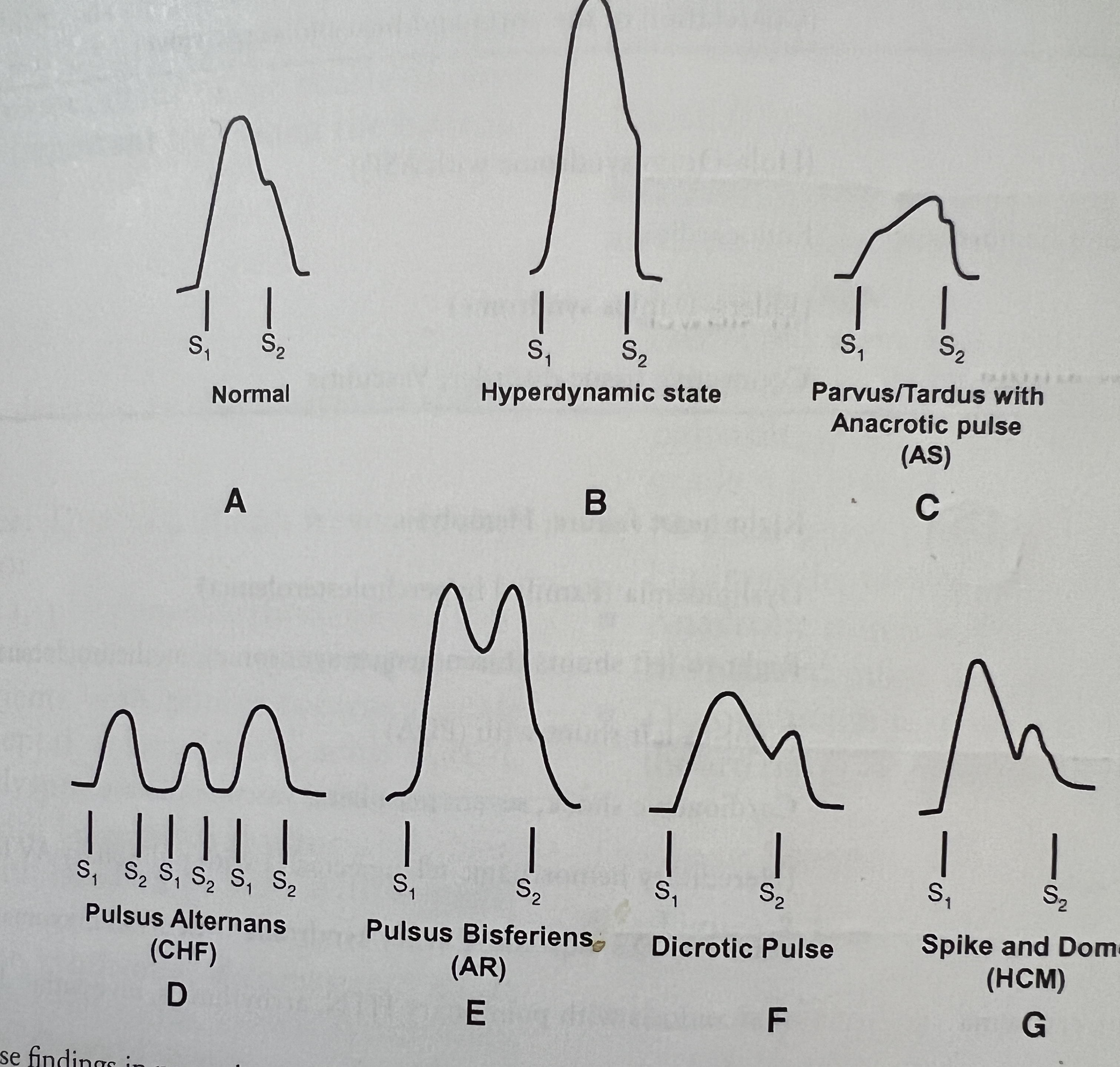Carotid Pulse Findings in Disease States
1/6
Earn XP
Description and Tags
Flashcards based on carotid pulse findings in normal and disease states.
Name | Mastery | Learn | Test | Matching | Spaced |
|---|
No study sessions yet.
7 Terms
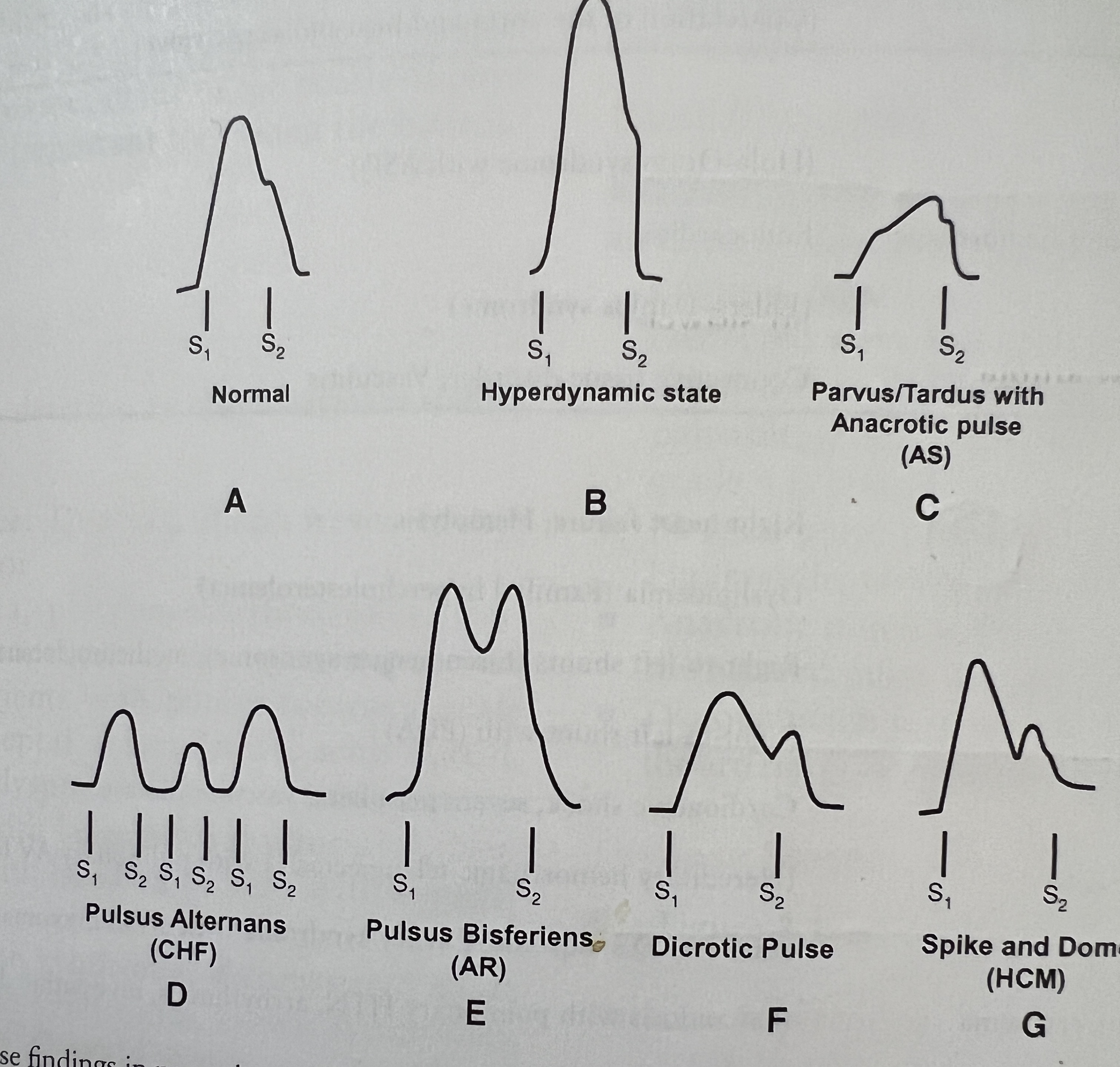
What characterizes a normal carotid pulse?
A rapid ascending and descending limb with a dicrotic notch during aortic valve closure.
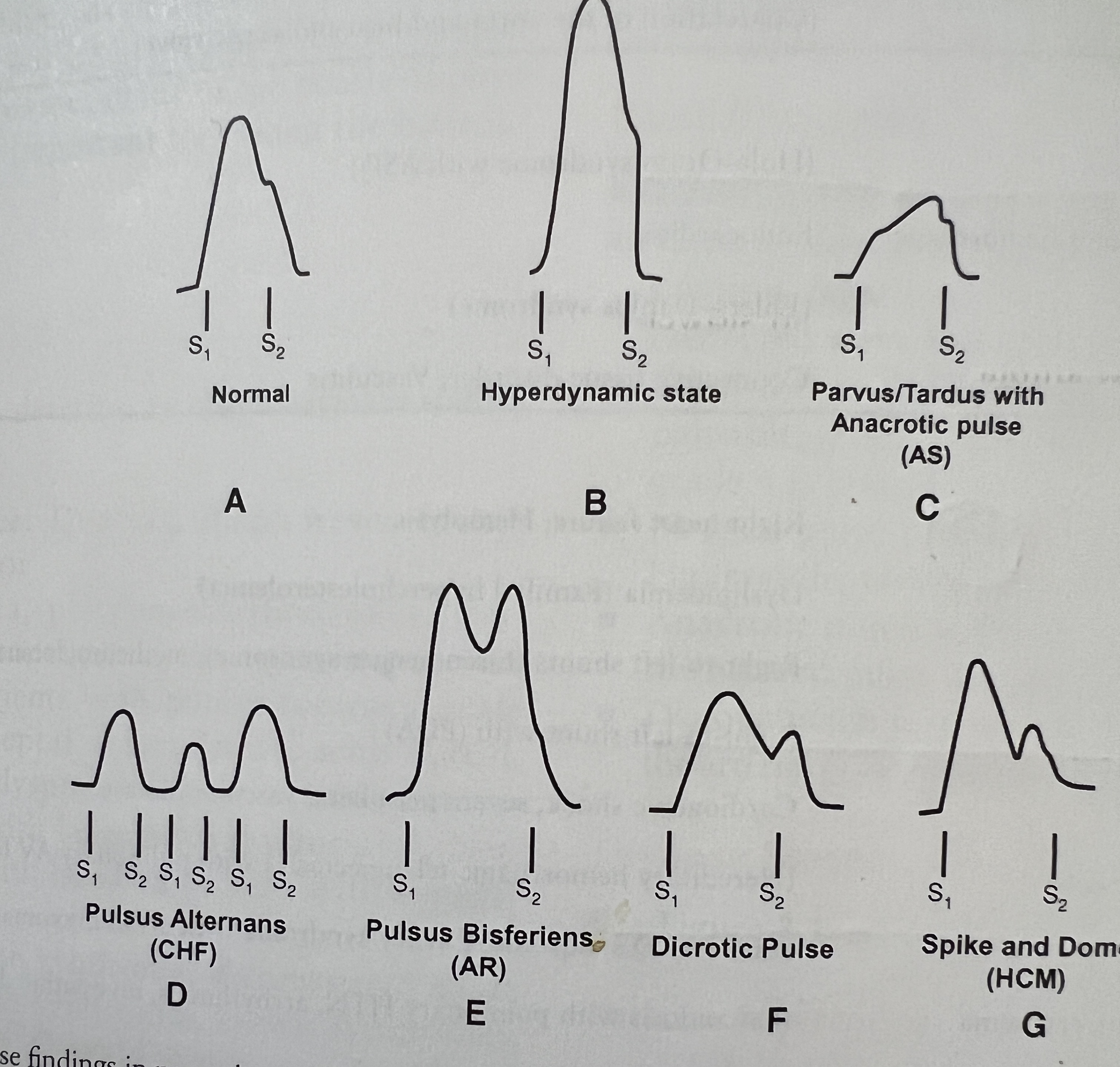
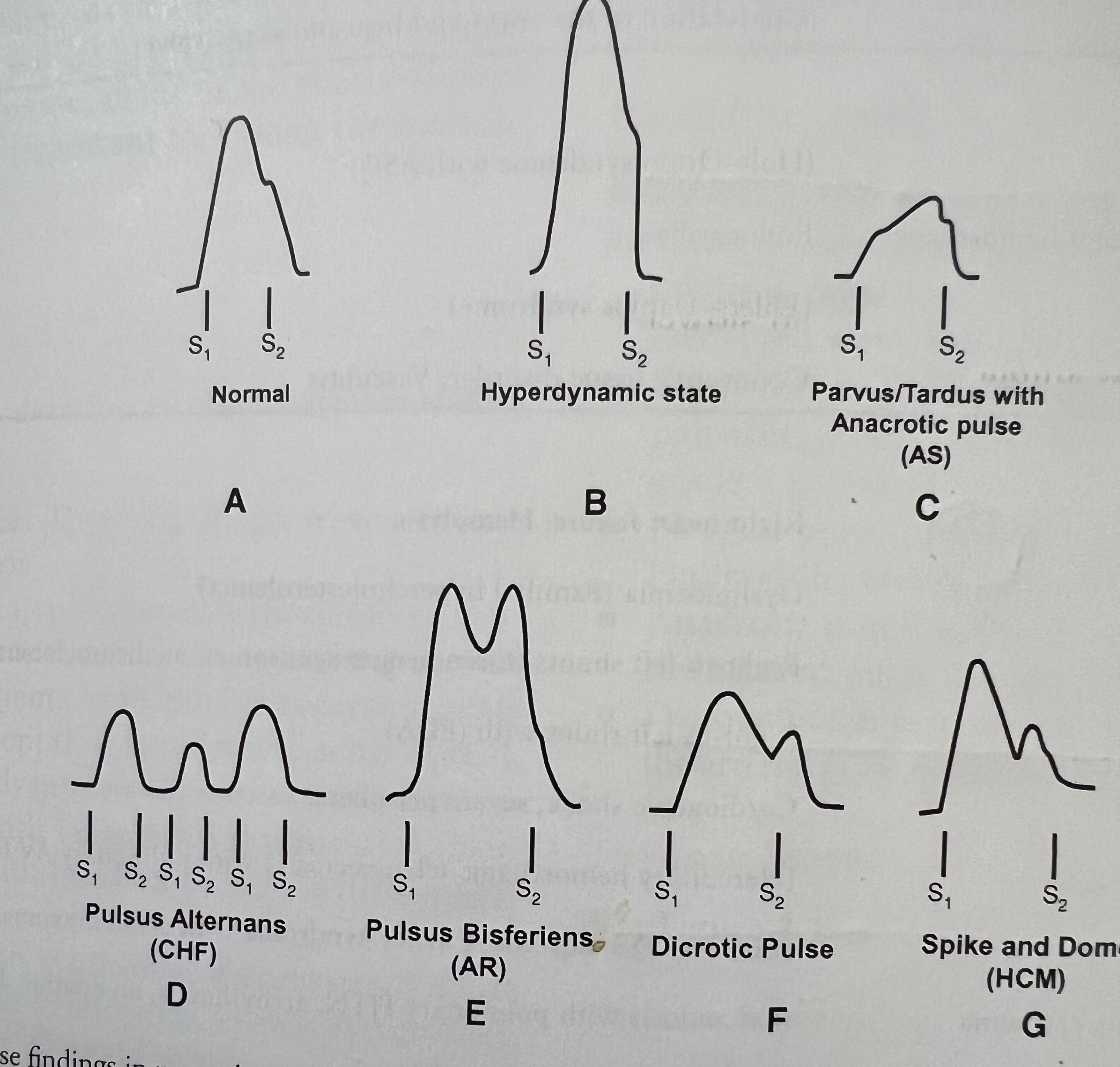
What characterizes a hyperdynamic pulse?
A rapid, high-volume ascending and descending limb.
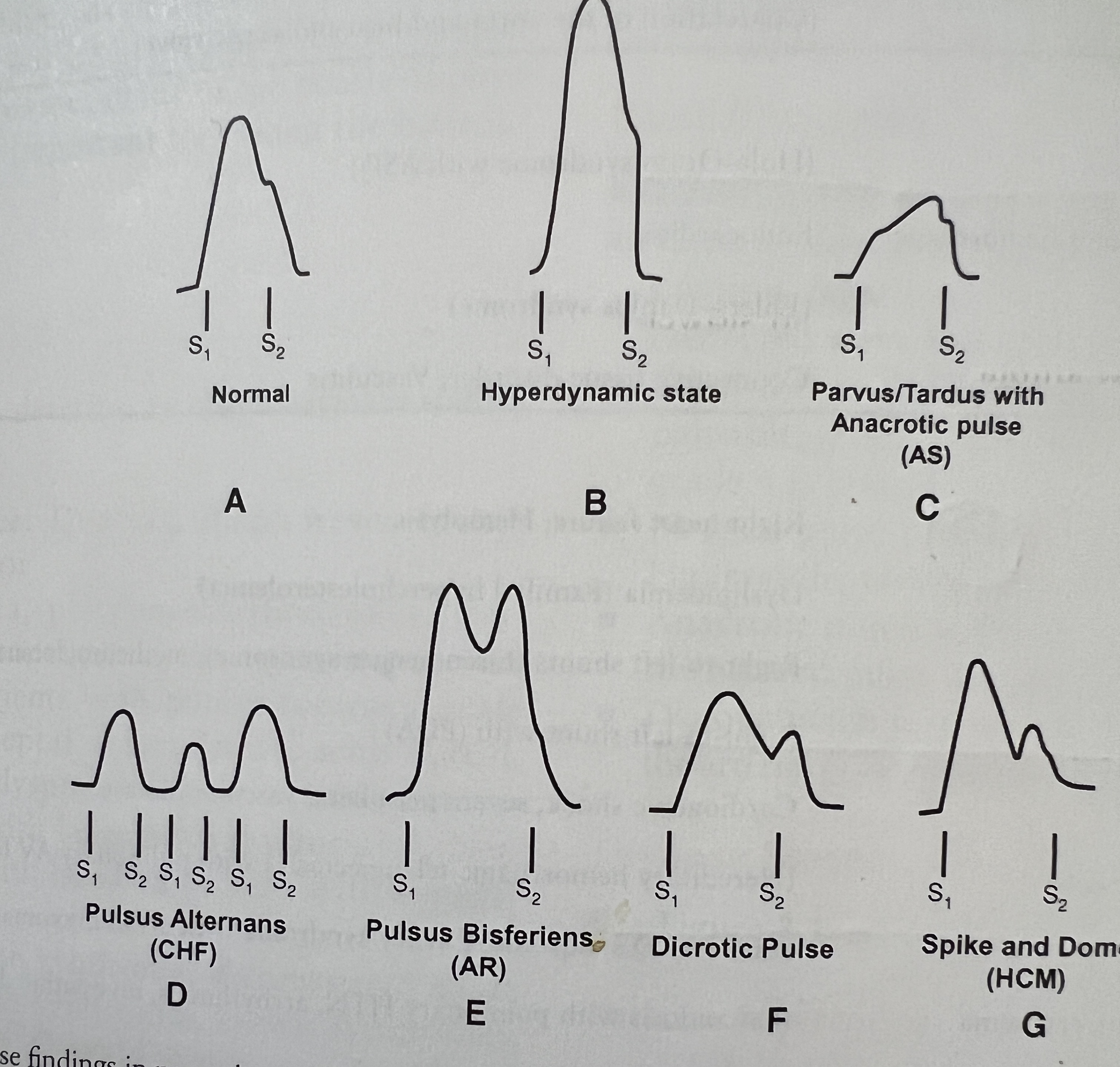
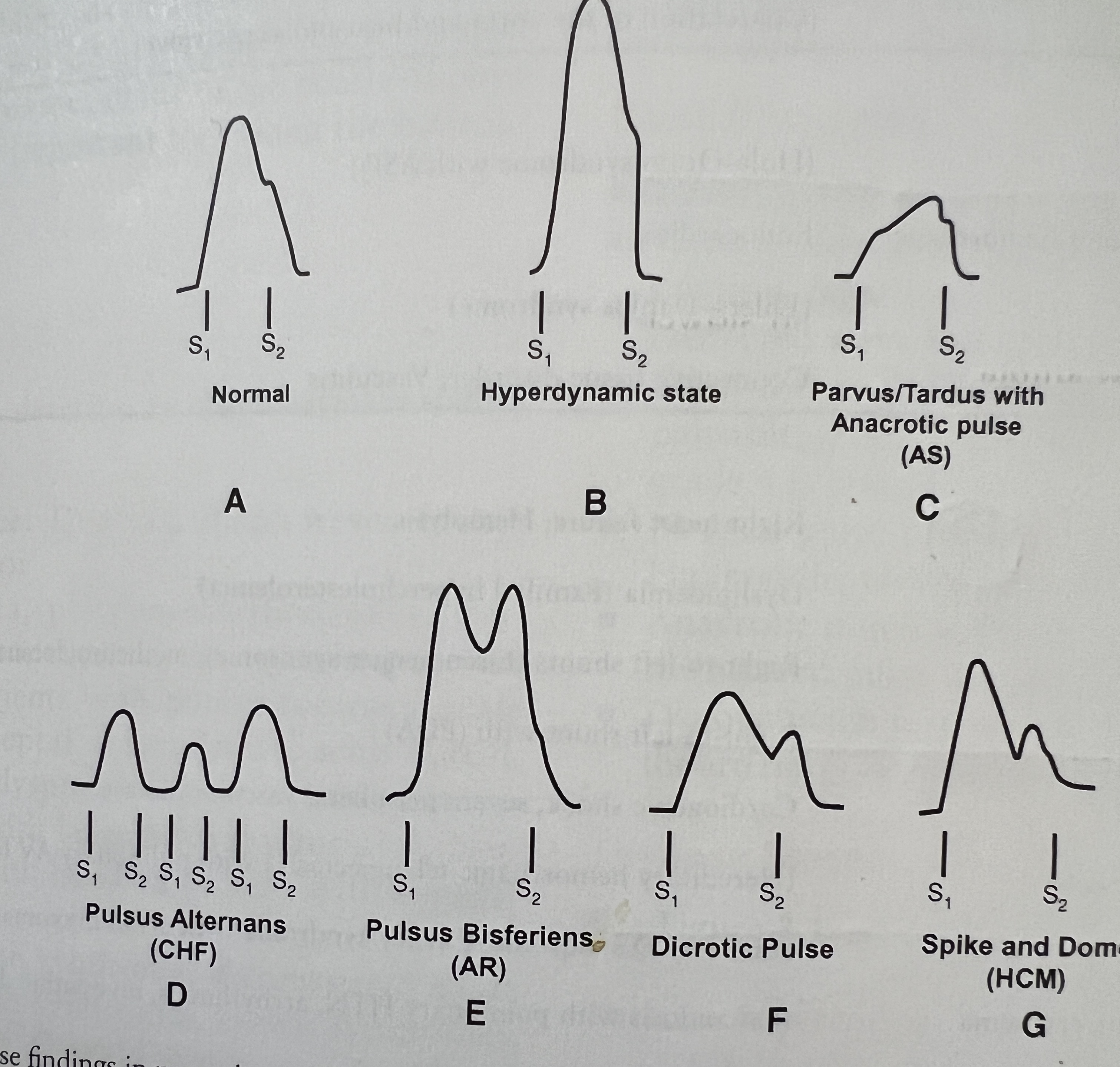
What is a Parvus/Tardus pulse with anacrotic notch associated with?
A small-amplitude pulse with a delayed systolic peak, often associated with Aortic Stenosis (AS).
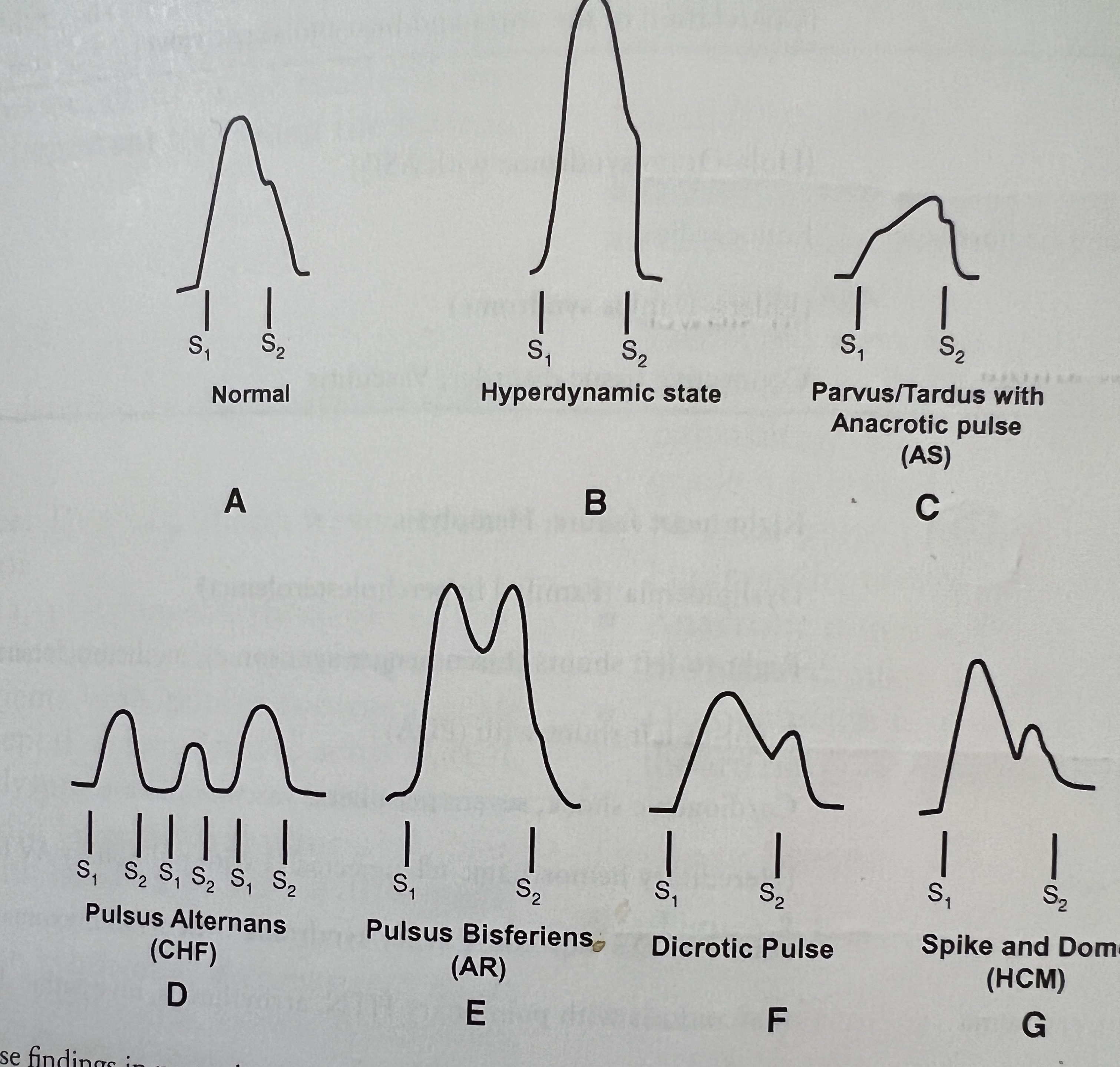
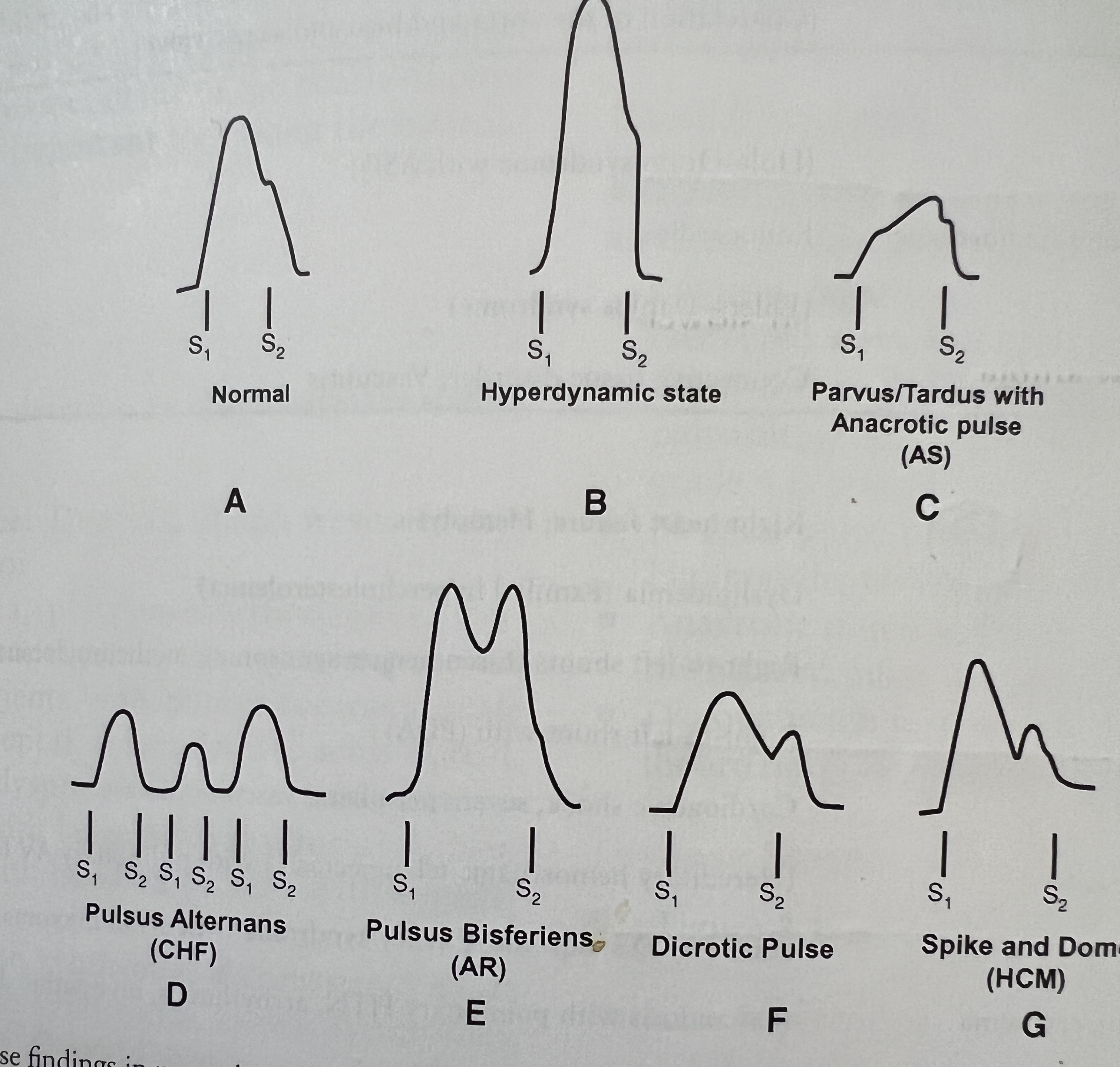
What is pulsus alternans and what condition is it often seen in?
Beat-to-beat variation in arterial pulse amplitude, often seen with left ventricular dysfunction and low stroke volume (CHF).
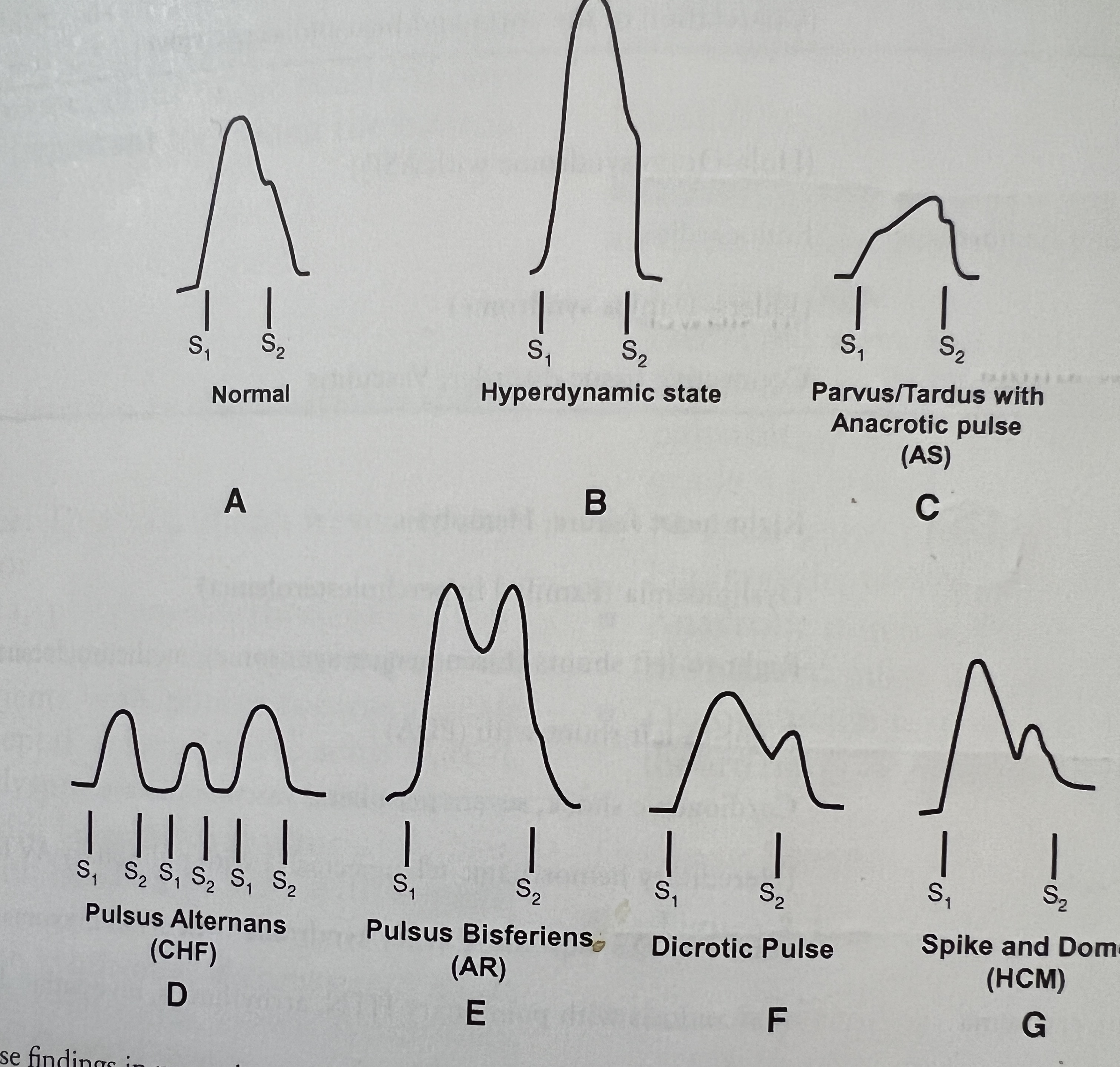

Describe a pulsus bisferiens and what condition is it often seen with?
Two systolic peaks during systole (ejection/percussion wave and reflected/tidal wave). Often seen with isolated Aortic Regurgitation (AR) or combined AR and stenosis.
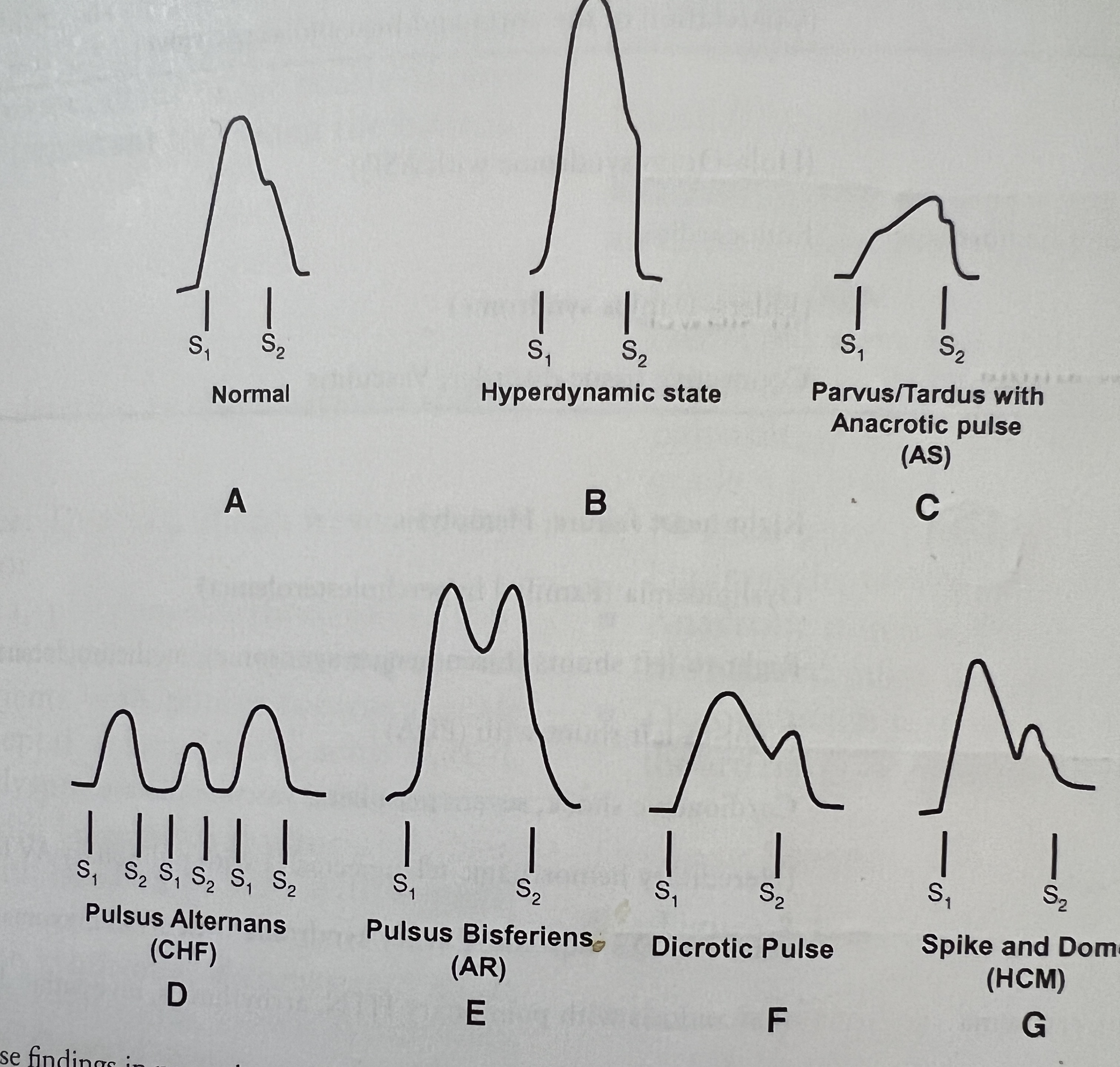
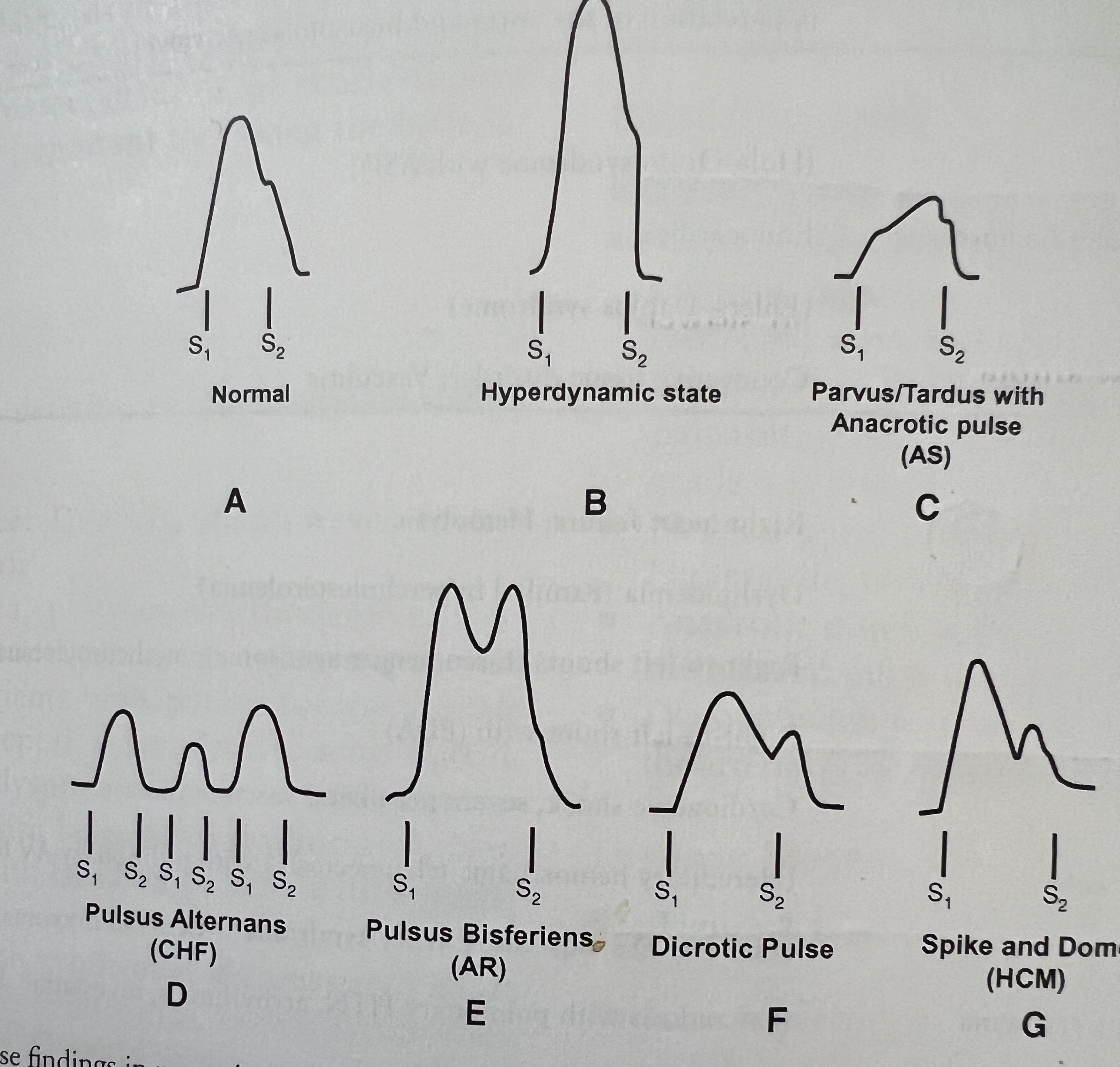
What is a dicrotic pulse and what conditions are they associated with?
A double-peaked pulse where the dicrotic notch is present in diastole just after S2, typically in patients with hypotension due to low CO or low SVR.


What is a spike and dome pulse and what is it associated with?
An initial rapid systolic peak followed by a lower-amplitude systolic peak, associated with Hypertrophic Obstructive Cardiomyopathy (HOCM).
